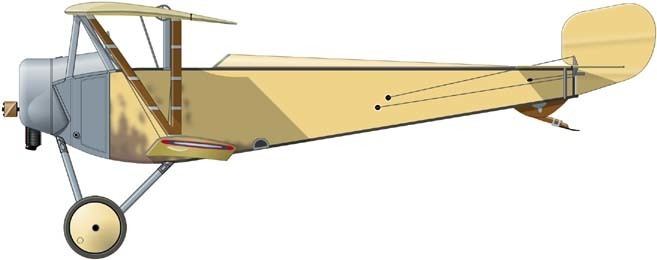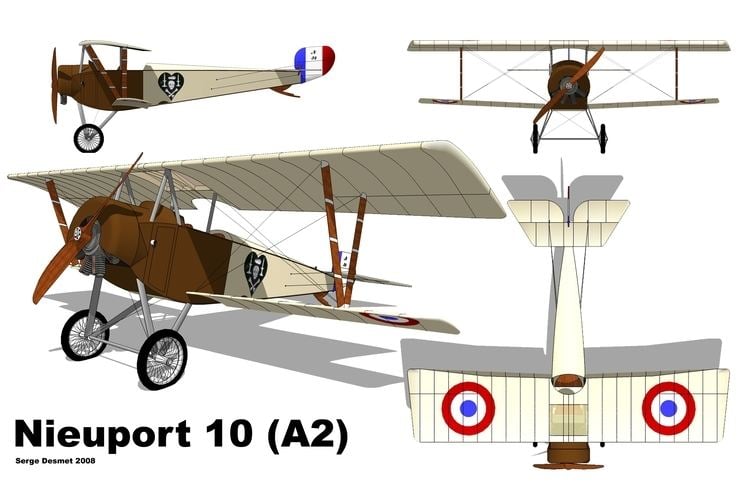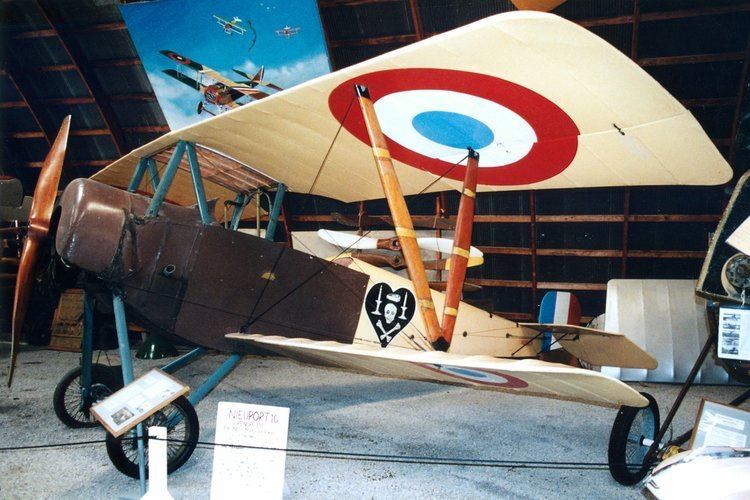Top speed 139 km/h Length 7.09 m Manufacturer Nieuport | Wingspan 8.2 m First flight 1914 Designer Gustave Delage | |
Nieuport 10 biplace du mdl georges viallet le grand oncle du baron jeannot
The Nieuport 10 was a French First World War sesquiplane that filled a wide variety of roles including reconnaissance, fighter and trainer.
Contents
- Nieuport 10 biplace du mdl georges viallet le grand oncle du baron jeannot
- Nieuport 10
- Design and development
- Variants
- Operators
- Survivors
- Specifications Nieuport 10 C1 fighter
- References

Nieuport 10
Design and development

In January 1914, designer Gustave Delage joined the Société Anonyme des Etablissements Nieuport, and started working on a series of aircraft that would remain in production for the remainder of the First World War. The Nieuport 10 was first of these and was originally designed to compete in the Gordon Bennett Trophy race of 1914. World War I caused this contest to be cancelled, and the type was developed as a military two seat reconnaissance aircraft that entered service in 1915.

The type featured a distinctive "V" strut layout. The lower wing was much smaller in area than the upper wing. The concept was intended to combine the strength of the biplane's wire braced wing cell with the good visibility of the parasol monoplane.

Many were converted or built as single-seat fighters by covering the front cockpit, and adding a Lewis Gun or Vickers machine gun either to fire through the center section of the top wing or mounted over it, firing forwards. In this form, the type was used as a fighter.
Two major types were developed from the Nieuport 10 - the Nieuport 11 Bébé - a smaller aircraft, designed from the outset as a single-seater, and the Nieuport 12 - a more powerful two-seater with a larger top wing. In addition, production was undertaken of a dedicated trainer version under the Nieuport 83 E.2 designation with detail changes. A single example of a triplane, using a Nieuport 10 airframe was built to test an unusual staggered wing concept.
Variants
Operators
Survivors
Two Nieuport-Macchi 10,000's survive and are on display in Italy, one at the Museo Storico Italiano della Guerra and one at the Museo della Scienza e della Tecnologia "Leonardo da Vinci", and an original Nieuport 83 E.2 that had been flown by Charles Nungesser while barnstorming in the United States shortly after the First World War, is at Old Rhinebeck Aerodrome on static display.
Specifications (Nieuport 10 C.1 fighter)
General characteristics
Performance
Armament
